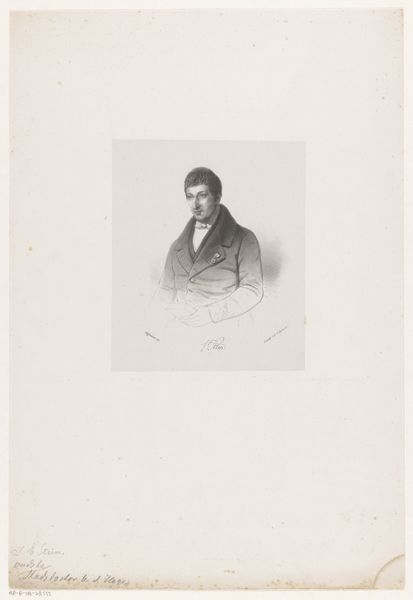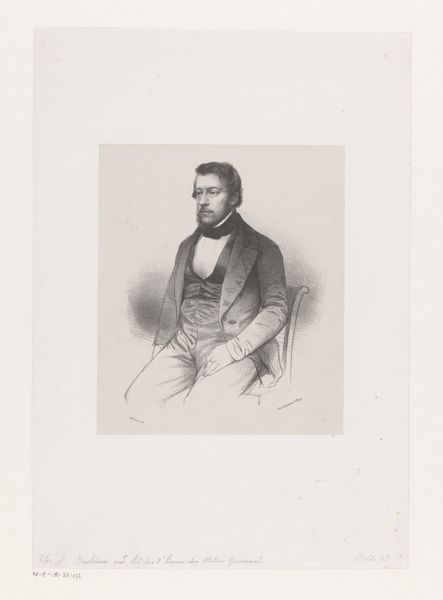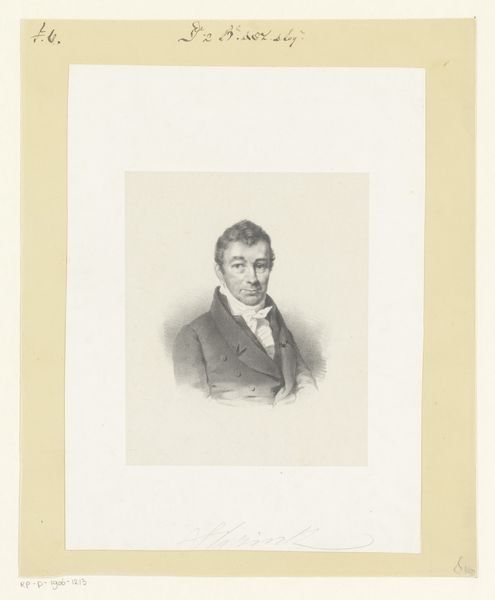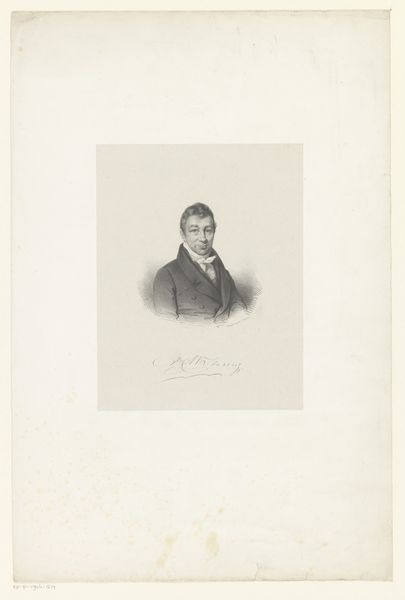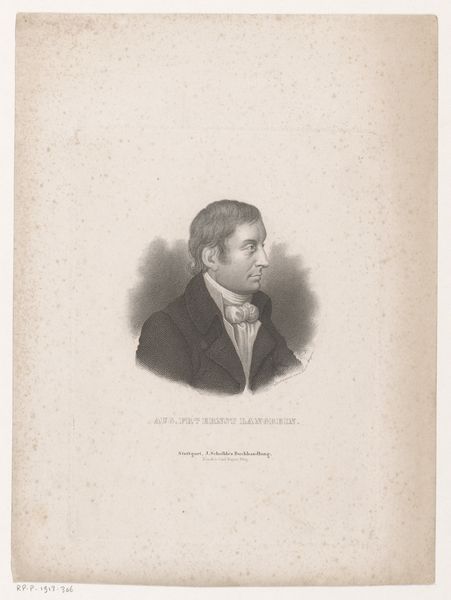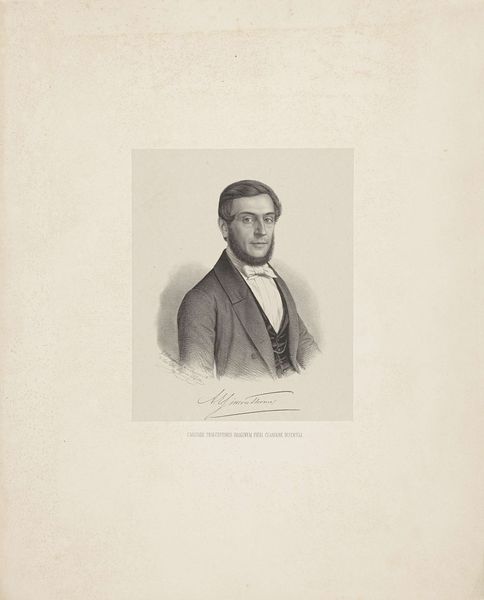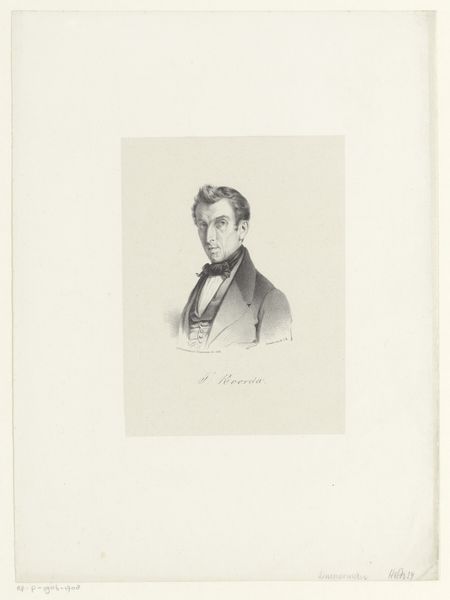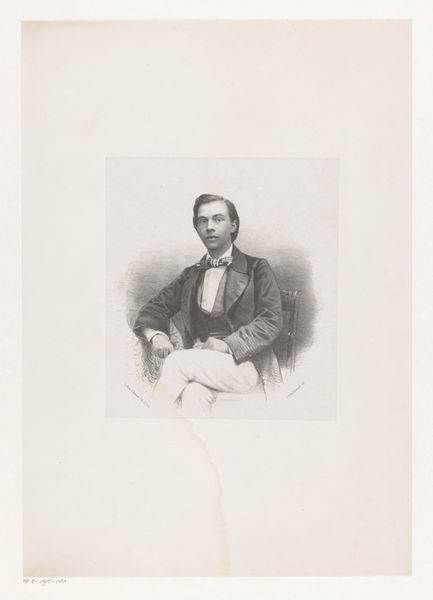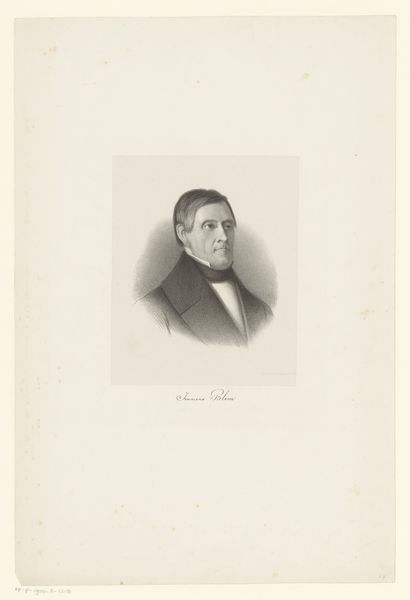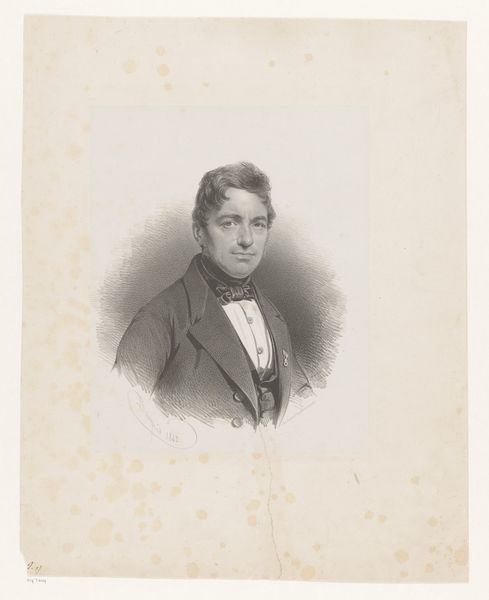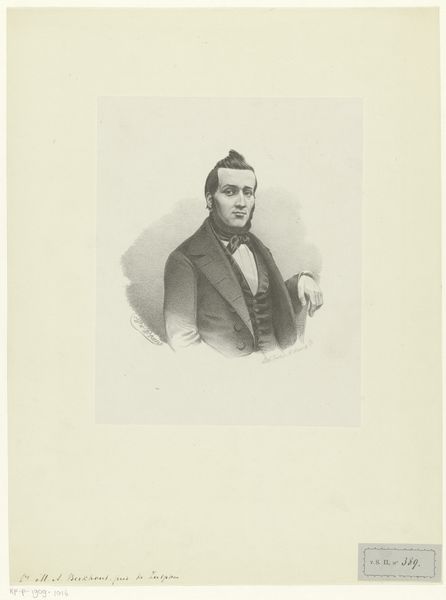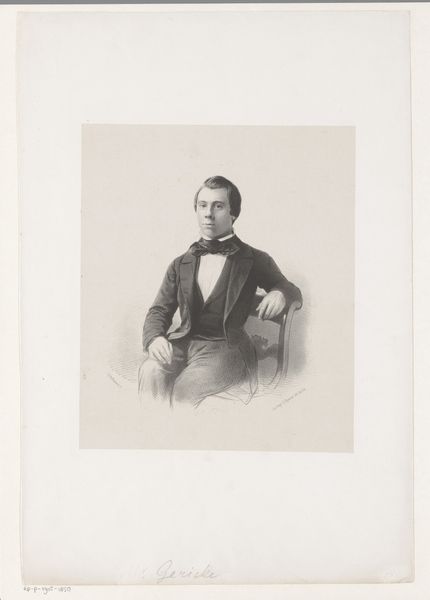
drawing
#
drawing
#
picture layout
#
shape in negative space
#
16_19th-century
#
negative space
#
expressing emotion
#
portrait reference
#
animal drawing portrait
#
portrait drawing
#
a lot negative space
#
remaining negative space
#
fine art portrait
#
realism
Dimensions: height 425 mm, width 312 mm
Copyright: Rijks Museum: Open Domain
Curator: Looking at this portrait, I immediately see a study in contained emotion. It’s quite stark, isn't it? Editor: It is, the realism here is powerful. This is a drawing entitled "Portret van Frederik Willem Conrad," created sometime between 1851 and 1883 by Johan Hendrik Hoffmeister. Let's consider the socio-political position of a man portrayed this way. Curator: Good point. The very conscious posture and detailed clothing are so striking and intentional. But look at his gaze – there's almost a sense of... resignation? What kind of societal constraints would require such reserve? I feel a bit sad, actually. Editor: That expression definitely evokes a mood, doesn't it? Notice how the artist utilizes the fall of light to accentuate the subtle features. It's carefully calculated, really calling on established symbolic traditions. Do you see something classical about this figure? I think about neoclassical approaches to social issues. Curator: Indeed. I notice it. Is it maybe also speaking to larger, persistent questions of labor and ownership that resonated so strongly in this man's life and historical moment? Editor: Absolutely. The symbols— the dark suit, that small glimpse of the decoration in the buttonhole, the hand resting authoritatively, even languidly. Each is communicating something about social status and position. There is such nuance there. Curator: All the signs of social power! You've helped me see new angles of societal representation here. It encourages me to reconsider similar artistic explorations. Editor: And you've broadened my understanding of what could initially be seen as established iconographical language. Thank you for that rich engagement.
Comments
No comments
Be the first to comment and join the conversation on the ultimate creative platform.
